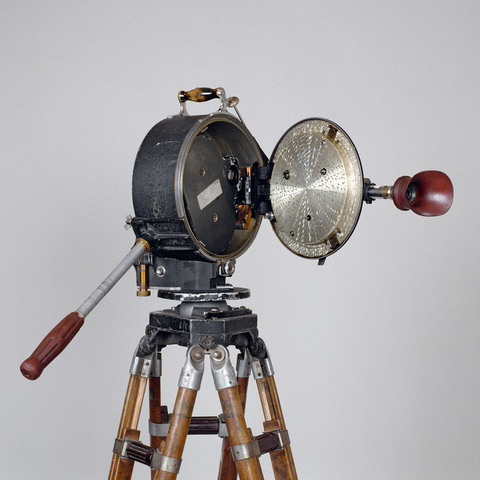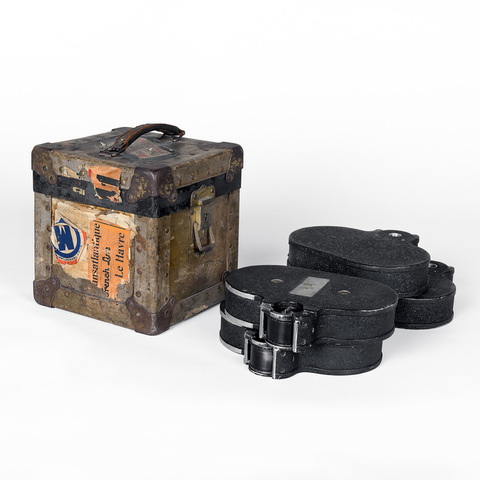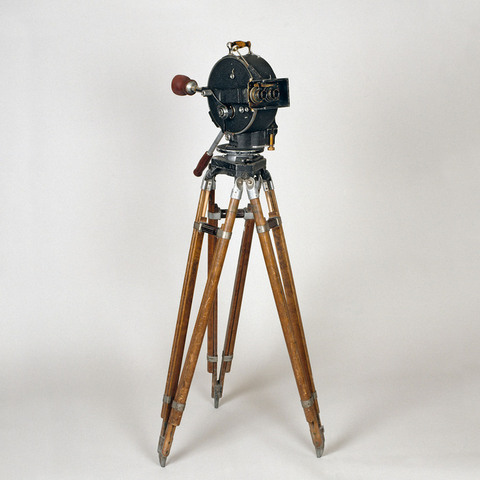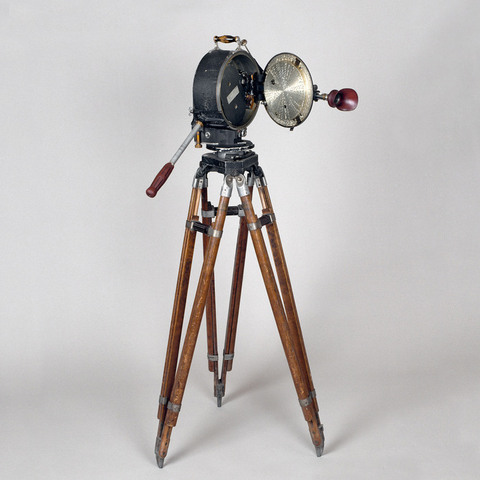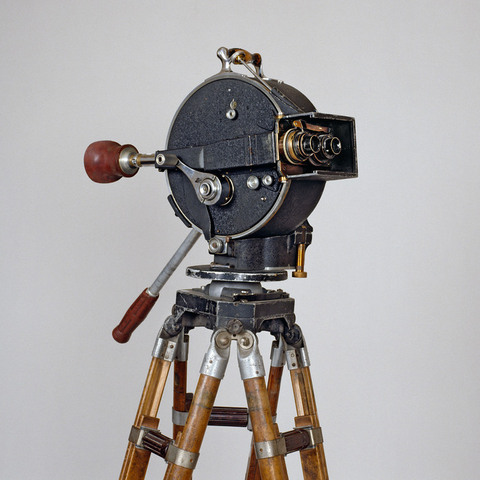Caméra film 35 mm
Fiche détaillée
Type de l'appareil
entraînement du film 35 mm par une griffe, mue par une bielle et une came excentrique ronde (8 images/tour) ; deux objectifs (pour la visée et la prise de vues) ; obturateur 230° périphérique faisant le tour de l'appareil ; dispositif à manivelle pour fondu ; chargeur intérieur de 60 mètres débiteur et récepteur ; viseur extérieur orientable ; manivelle ; poignée ; compteur de métrage ; poinçon ; caisse de transport contenant quatre magasins 35 mm métalliques ; trépied
Auteurs
Akeley Carl E.
New York, New York
Fabricants
Akeley Camera Incorporation
New York, New York, 175 Varick Street
Utilisateurs
Akeley Carl E.
New York, New York
Distributeurs
Informations non disponibles
Sujet du modèle
Informations non disponibles
Objectif
deux objectifs (visée et prise de vue) Tessar f : 2,7 F. 5 cm Carl Zeiss Iéna N° 744 113 et 744 106
Taille de l'objet
Ouvert :
Informations non disponibles
Fermé :
Longueur : 60 cm
Largeur : 20 cm
Hauteur : 40 cm
Diamètre :
Informations non disponibles
Taille de la boîte de transport
Informations non disponibles
Remarques
Etiquette métallique "Akeley". Gravé sur la face avant : "Akeley Camera Inc."
Cette caméra baptisée "Pancake" (galette) en raison de sa forme fut employée entre autres réalisateurs par Robert Flaherty (Nanouk).
"Mr. Carl E. Akeley, Inventor, Naturalist, Sculptor and Lecturer. Mr Akeley has been since the organization of the company its president and has personally supervised the development of its products. He has to his credit many notable and original creations in his many versatilities, among which is the invention of the "Cement Gun" for which he received the Scott Gold Medal of the Franklin Institute. He has invented methods which have taxidermy an art and brought it to its highest standards of today. His many works of animal sculpture stand in a class by themselves. As a naturalist, he is best known for his studies and photography of the African elephants in their native haunts. In the fall of 1921, Mr. Akeley made his fourth trip into the heart of Africa, with three Akeley Cameras, to study and photograph the gorilla. He secured the first and only motion pictures ever made of this massive man-ape in its secluded haunts. [...] An all-metal (aluminium) camera, standard throughout, light and extremely quick in all its adjustments for getting into action ; yet very strong, compact and dependable. Built of the finest workmanship and material, in the simplest and soundest principles of mechanics, containing some twenty ball bearings to take care of wear and many other features of vital importance to the operator, alone to be found in this machine. [...] A shutter that gives such an extremely wide aperture opening, i.e. 230 degrees, is a noteworthy accomplishment in the annals of motion picture photography and is an accomplishment to be found alone in the Akeley, due principally to the very efficient design of the film movement and secondarily to the design of the shutter. [...] Dissolving shutter ; the dissolving shutter is designed with the usual mechanical simplicity and strenght of the rest of the machine. It operates in the camera proper within the cavity of the main pivotal bearing and directly on the shutter shaft. The camera can be entirely removed from the upper arm without any complication or detriment to this dissolve or its complete functionning. It operates as a manual dissolve, with a substantial handle having a good stroke, so the operator has a smooth and complete control for any lenght. The cameras can be furnished with either shutter, i.e. 180 degree adjustable shutter, 180 degree dissolving shutter, 230 degree non-adjustable shutter" (Akeley Camera Price List April 1, 1929, New York, Akeley, 1929).
Bibliographie
The Akeley Camera, New York, Akeley, 1929.
Akeley Camera Price List April 1, 1929, New York, Akeley, 1929.
The Akeley Camera, the Camera of Superior Accomplishment, New York, Akeley, s.d.
Ira Hoke, "What is an Akeley ?", American Cinematographer, April 1928.
Society of Operating Cameraman, summer 1992, p. 2.
